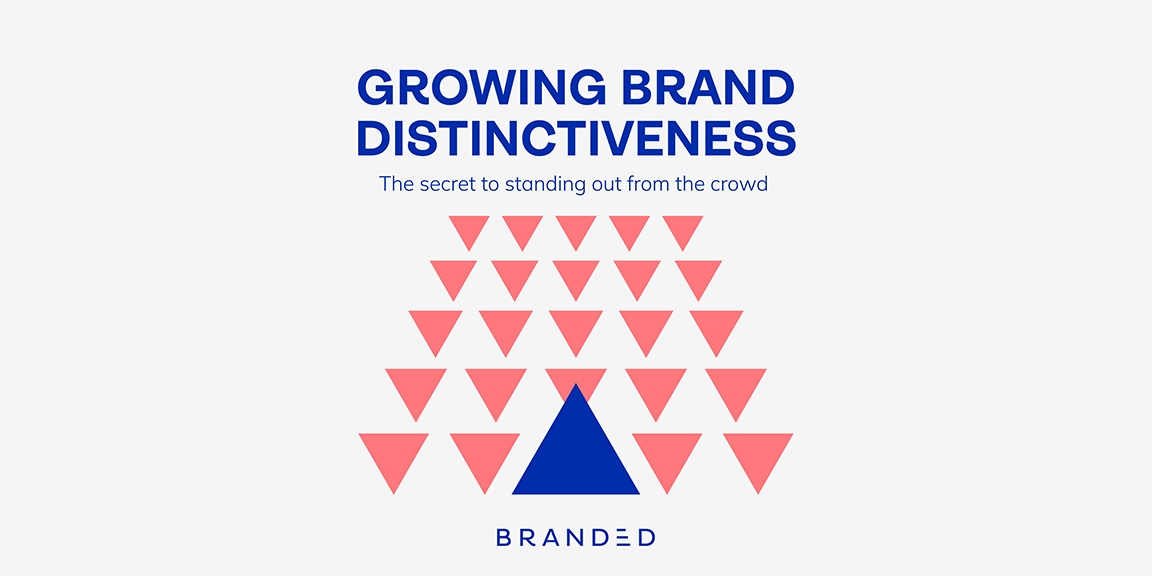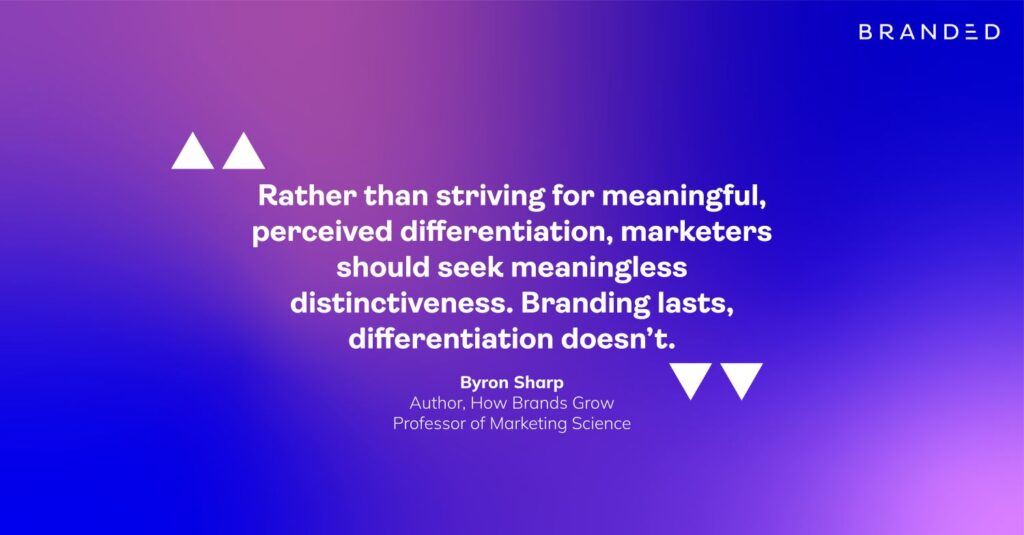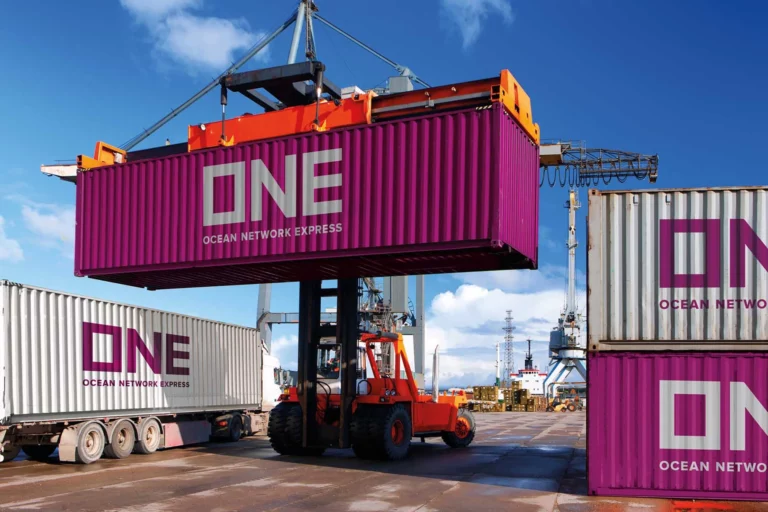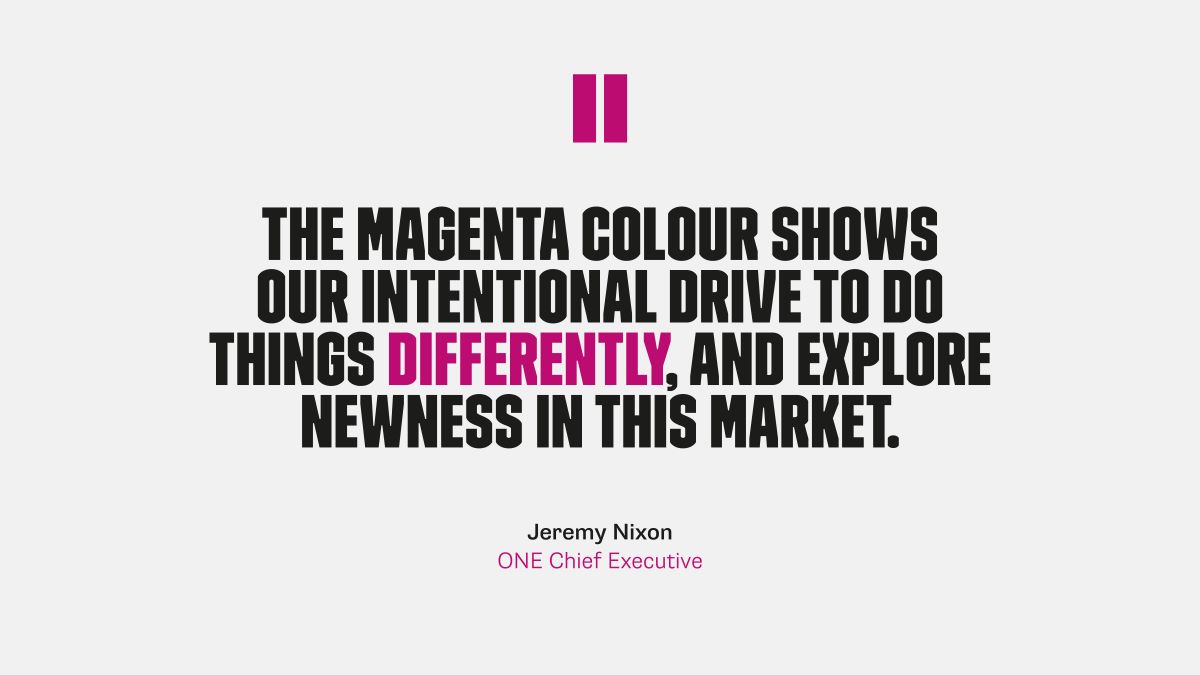
Why Brand Differentiation Isn’t Enough
July 24, 2023

Do you know the difference between brand differentiation and brand distinctiveness?
If you want to stand out from the crowd, don’t get the two confused. Here’s why:
Any marketer will tell you that brand differentiation is a crucial building block for successful brands. And they’re not wrong.
But in increasingly saturated retail categories, where there are thousands of brands for every product you can (and can’t) imagine, brand differentiation alone won’t cut it.
Today, brands need to update their mindset: asking not just “how can we stand out from the crowd?” but “how can we stand head and shoulders above the crowd?”
The answer? Brand distinctiveness.
The problem is that, while both trusted and important tools in brand building, brand distinctiveness and brand differentiation are often confused. So what’s the difference?
What is brand differentiation?
Brand differentiation works by highlighting the unique attributes and features that differentiate a brand from its competitors. The main thing to remember is that these work at a product, service or price level. For example, chewing gum that retains its flavor for twice as long, a television with Ambilight, or an own label brand of ketchup that’s cheaper than Heinz.
Differentiation gives you a competitive advantage—a reason for customers to choose you over everyone else. But you also need to give them a reason to keep choosing you over everyone else.

What is brand distinctiveness?
Enter brand distinctiveness: the secret to etching your brand into the consumer’s mind.
Brand distinctiveness is about making your brand instantly identifiable to customers. It encompasses the whole brand experience, including your brand name, logo, jingle, slogan, house style, messaging, tone of voice, customer service, packaging, and more. Just think of a yellow ‘M’ or “Ba da ba ba ba”—see it or hear it, and you immediately know it’s McDonald’s.
Why is brand distinctiveness important—especially today?
Brand distinctiveness helps consumers a) identify your brand in an increasingly cluttered marketplace and b) remember your brand amid ever-mounting distractions.
Think of it as the difference between rational vs. emotional marketing. Rationally, a customer knows that own brand ketchup is cheaper than Heinz. But they’ll still choose Heinz, as they’ve grown up with a love and affinity for the brand.
That’s because brand distinctiveness is about fostering emotional connections with consumers. If your brand consistently delivers a memorable and authentic experience, you’ll cultivate a loyal customer base that feels aligned with your brand values and personality.
Another bonus from creating this uniqueness is that it bulletproofs your brand from competitors trying to replicate or imitate it (an especially big risk when copycat technology is readily available).
How to achieve brand distinctiveness?
Differentiation sets you apart from the competition. Distinctiveness helps you hold the top spot. Aim for both, and you’ll have a winning formula that leaves your rivals in the dust.
To achieve distinctiveness, you need:
A deep understanding of your target audience, their needs, desires and aspirations.
A meaningful, unique brand story that resonates with consumers on an emotional level.
Consistency across all touchpoints: everything from your imagery, to copy, to customer support tells that story.
Example: How OCEAN NETWORK EXPRESS stands out in a sea of sameness

When you think of shipping containers, what springs to mind? Well, exactly…nothing exciting.
But working with BRANDED, Japan’s leading shipping container group, NYK, MOL and K Line, were able to turn this into a competitive advantage.
We found them a common purpose, creating an identity that was deployed across 2 million containers and 240 enormous ships.

It all started with one, distinctive visual asset: its magenta color, inspired by Japanese cherry blossoms. By disrupting expectations around the humble shipping container, we crafted a brand story that communicated their intentional drive to do things differently and explore newness in the market. Culminating in a single, unifying name: ONE.
The challenges of achieving brand distinctiveness
Lots of brands have managed to achieve distinctiveness, but it isn’t without its challenges.
Firstly, it’s difficult to know where to start and where to turn, when consumer preferences are always changing and trends come and go faster than you can say “hamster wheel”.
Equally, maintaining that essential brand consistency is no easy feat, especially for larger organizations with multiple product lines. Then there’s the pressure to adapt to ever-evolving platforms and technologies while staying true to your brand values, vision and personality.
These challenges can drain creativity and originality, which is why lots of brands are struggling to hold on to brand loyalty, and are losing customers to a crowded market.
Your step-by-step guide
Luckily, we’re here to help. Bringing together 40 years of experience building mega brands with meteoric growth, we’ve put together the ultimate guide to brand distinctiveness.
You’ll get a step-by-step playbook to brand distinction, packed full of examples to inspire you. So you can find your bright idea, learn how to execute it brilliantly, and expect big results.
A complete guide to brand distinctiveness
Contact us to see how BRANDED can help


